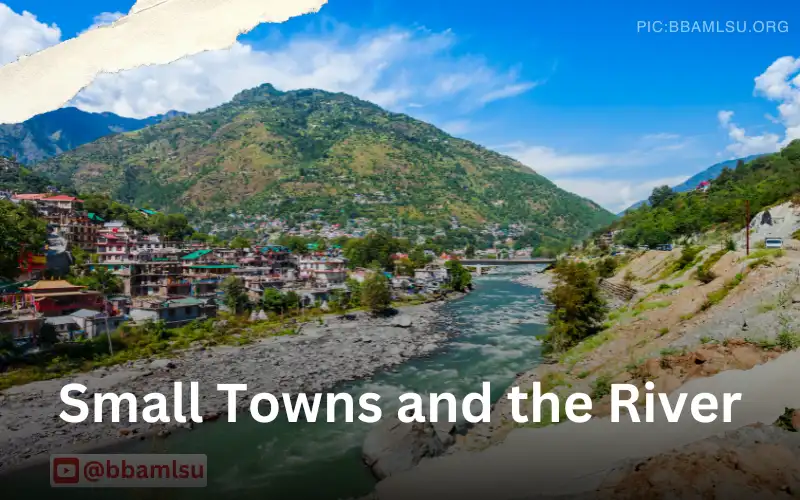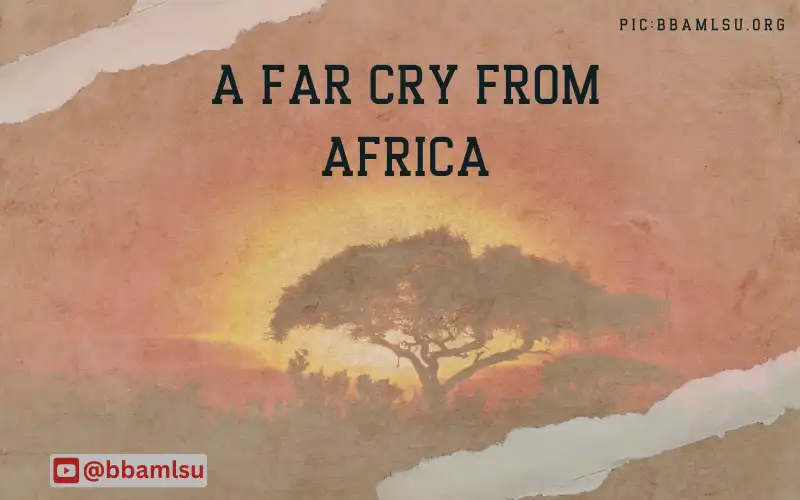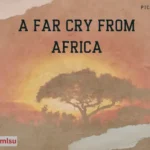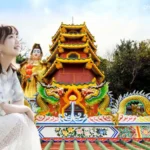Mamang Dai’s poem “Small Towns and the River” is a profound meditation on the eternal cycle of life and death, intricately woven through the fabric of a small town in Arunachal Pradesh, India.
Dai’s narrative is imbued with a deep sense of place and the inevitable passage of time, capturing the essence of existence in its myriad forms.
The poem’s evocative imagery and reflective tone invite readers to contemplate the cyclical nature of life, death, and rebirth, mirrored in the flow of the river and the life of the small town.

The Cycle of Life and Death in Nature
Dai uses the river as a central metaphor to represent the flow of life and the passage of time.
The river, in its continuous movement, signifies both change and constancy, embodying the perpetual cycle of birth, life, death, and renewal. The poet writes:
“Small towns always remind me of death.
My hometown lies calmly amidst the trees,
it is always the same,
in summer or winter,
with the dust flying,
or the wind howling down the gorge.”
Here, the juxtaposition of the calmness of the town with the constancy of seasonal changes suggests a timelessness, where life moves forward yet remains rooted in its essence.
The river’s unending flow mirrors the perpetual motion of life, where every end is followed by a new beginning. The imagery of dust and wind further underscores the transient nature of existence, reminding us that change is an inherent part of life’s cycle.
The Symbolism of the River
The river serves as a powerful symbol of life’s continuity and the interconnectedness of all living things. It embodies both life’s vitality and its inexorable march towards death. Dai captures this duality with poignant simplicity:
“Here by the river the dead are brought, to be mourned awhile, then left to their own devices.”
The act of bringing the dead to the river signifies a return to nature, a merging back into the eternal flow. It reflects cultural practices where rivers are often seen as sacred, purifying, and a means to transcend the mortal coil.
The river thus becomes a bridge between life and death, between the material and the spiritual.
Reflections on Time and Memory
Dai’s contemplation of the river also delves into themes of memory and the persistence of the past. The town, with its familiarity and unchanging rhythm, stands as a testament to the cyclical nature of life. Dai muses:
“The days are long and the nights echo with remembered talk and smiles. The past is always with us.”
This sense of lingering memories and the omnipresence of the past speaks to the idea that life is a continuum, where each moment is imbued with the echoes of what came before.
The river, flowing perpetually, carries with it the memories of all that has transpired, suggesting that while individual lives may end, the essence of life persists in an unbroken stream.
The Unchanging Essence of Small Town Life
In “Small Towns and the River,” Dai presents small town life as an embodiment of permanence amidst the flux of time.
The town, nestled amidst nature, remains largely unchanged, offering a stark contrast to the ever-moving river. This dichotomy highlights the balance between constancy and change, between life and death. Dai writes:
“They always build their houses at the edge of the forest where the wind sings and the moon breaks into untroubled laughter.”
The description of the houses at the edge of the forest, where natural elements such as wind and moonlight create an atmosphere of peace and timelessness, suggests a life in harmony with nature. This setting reinforces the notion that life, in its essence, is a part of a larger, unchanging cycle.
Cultural Context and Universality
Mamang Dai’s reflections on life and death are deeply rooted in the cultural context of Arunachal Pradesh, yet they resonate with universal themes.
The rituals and practices surrounding death, such as the mourning by the river, speak to a broader human experience of grappling with mortality and finding solace in the continuity of nature.
The poet’s ability to evoke these themes through the specific lens of her hometown provides a rich, textured understanding of life’s cycles.
Conclusion
In “Small Towns and the River,” Mamang Dai masterfully reflects on the eternal cycle of life and death through vivid imagery and a profound sense of place.
The river, as a central metaphor, encapsulates the flow of time and the interconnectedness of life and death. Through her poetic meditation, Dai invites readers to contemplate the nature of existence, the persistence of memory, and the unending cycle of life that binds all living things.
Her work not only captures the essence of a specific cultural landscape but also speaks to universal truths about the human condition and our place within the eternal cycle of life and death.
By examining the nuances of the poem, one can appreciate how Dai’s reflections transcend the specifics of her hometown to touch upon the broader human experience, making “Small Towns and the River” a poignant and resonant exploration of life‘s most fundamental cycles.













